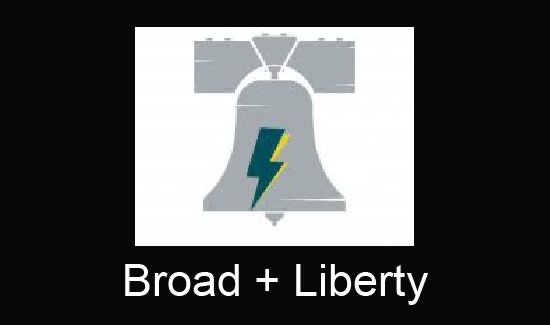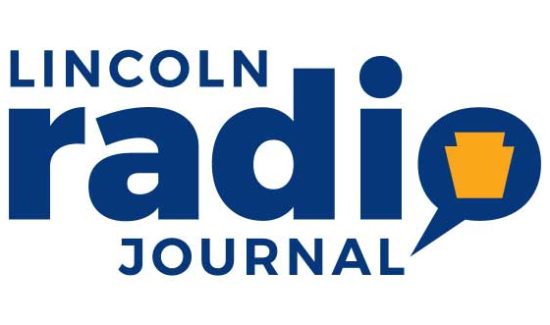The Common Level Ratio in Assessment Appeals
![]()
Background: The Pennsylvania Constitution, Article VIII, Section 1, states: “All taxes shall be uniform, upon the same class of subjects, within the authority levying the tax and shall be levied and collected under general laws.”
Article VIII, Section 2(b), para (ii), grants the General Assembly the power to “establish as a class or classes of subjects of taxation the property or privileges of persons who, because of age, disability, infirmity or poverty are determined to be in need of tax exemption or of special tax provisions… .”
____________________________________________________________________
Property tax fairness and appeals
The writers of the Constitution intended for tax levies to be fair and presumably that would mean a property tax would be based on the actual value of the property of each owner with exceptions as provided in the language cited above.
How is it then that there can be so much disparity in treatment or uniformity in property tax levies? In short, it is because assessments for tax purposes of individual properties in most counties do not change as market values change, owing to the fact that complete revaluations of all properties are not done on a regular basis—as are required in most states. In some counties evaluations have not been done in decades and those that have are generally a result of a court order.
Compounding the problem of poor and inequitable assessment regimes, the very heavy reliance on property taxes to fund schools and local governments exacerbates the inequities in assessed values.
In Allegheny County, the last countywide reassessment was in 2012. The values of properties established in that reassessment form the “base-year valuation,” which is then used to set the property’s taxable assessment value. That assessment continues unless there is major remodeling on the property or the assessment is successfully appealed. Or, in many cases, if the property is sold at price well above the base-year value and a taxing authority (school districts in particular) appeals the assessment as being too low. This has been a successful tactic.
On the other hand, if an owner believes their property value has fallen behind the rise in value in comparable properties elsewhere in the county or has, in fact, declined, he or she might file an appeal to have the assessment lowered.
Property owners who believe their assessment is too high can also appeal on two permissible grounds, (1) challenge the base-year valuation or (2) appeal the assessment on the basis of the market value of the property. The latter undoubtedly is the most used.
And in that regard Allegheny County Common Pleas Judge R. Stanton Wettick ruled in a 2015 decision on assessment appeals cases as follows:
“It is hereby ordered that the Allegheny County Board of Property Assessment Appeals and Review apply the Common Level Ratio to its findings of fair market value where the appellant elects a current market value methodology. The Board shall apply the Common Level Ratio regardless of whether it is sought by any party. This Order of Court also applies to proceedings before the Board of Viewers.”
Common level ratio defined
The common level ratio (CLR), as specified by the dictates of the State Tax Equalization Board (STEB), is to be used only in assessment appeals. CLR, according to STEB, is the arithmetic median of the individual sales ratios for every valid sale received from the county for the previous calendar year. The sales ratio is the assessed value divided by the sales price for each valid property sale. The CLR calculated from 2021 data will be used in appeals cases from July 1, 2022, to June 30, 2023.
So, how exactly is the CLR calculated and how useful is it in getting to the constitutional equity as prescribed in Article VIII? While it’s probably better than nothing, it leaves a lot to be desired in its ability to eliminate unfair assessments.
As described in the June 15, 2022, STEB document (dced.pa.gov), the CLR as calculated by STEB for each county is the median value of the ratio of assessed-value- to-sales price—the best indication of market value for arm’s length transactions—for all valid sales for a calendar year and reported by the county to STEB. The STEB methodology involves a statistical procedure that removes extreme outlier ratios of assessed value to sale price, both high and low. From the remaining ratios, STEB selects the median value to be the CLR for the county.
Bear in mind that the median value is the number that separates the data set into two groups, half above and half below the median. It is interesting that STEB uses the median value as opposed to the average. That suggests the distribution of values is significantly different from a normal or bell-shaped distribution and rather is skewed either toward higher or lower readings.
A new CLR is determined each year based on the sales in the preceding year. It is noteworthy that when the CLR that goes into effect, it is already somewhat dated; some of the sales used were completed up to 18 months before a new CLR is calculated.
And because the 2021 CLR is used for 12 months—until June 30, 2023—sales from the first part of 2021 will still be weighing on the CLR used in determining appeals outcomes. In times of extreme volatility in property markets the use of CLRs could be outdated and might be inappropriate.
Of course, keeping CLRs up to date quarterly or monthly would be time consuming and very confusing as they could fluctuate to a significant degree. And for smaller, less populous counties with few sales, there would be enormous problems of statistical confidence in the results.
In short, even as the CLR can be used to remove severe inequities, it is not an ideal—or even nearly ideal—solution to achieving uniformity in taxation as required by the Pennsylvania Constitution.
The CLR in Allegheny County
Currently, Allegheny County is working with an April consent order reached with appellant attorneys that could result in the 2020 CLR being reset to a value lower than the 81.1 figure that was used for July 2021 through June 2022. Appellant lawyers made the case that the sales submitted by the county for 2020 were seriously flawed. This could possibly open the prospect of permitting an extension of the filing date deadline for appeals for 2021 taxes well past the deadline of March 31, 2022.
The June 15 STEB advisory presented the certified county 2021 CLRs for use in appeals beginning July 1, 2022. Allegheny County’s 2021 CLR is set at 63.6. Statewide, CLRs ranged from 7.1 in Butler County (last reassessed in 1969) to 94.0 in Indiana County (last reassessed in 2016). As expected, counties that have done reassessments recently tend to have much higher CLRs. That is, assessments for most properties are close to the market value.
The CLR currently in effect (as of July 1) for Allegheny County, based on 2021 sales, means that half the ratios of assessed values to sales price were below 63.6 percent and half were above.
STEB has a web page that shows all sales per year but does not provide in the CLR report the range of values for the sales ratios for the lowest and highest values that produce the CLR. In Allegheny County for 2021 there was a huge percentage of sales (over 12,300 out of the total 41,433 reported to STEB) that were not arm’s length or have no assessed value reported or have assessed-values-to-sales ratios over 10 or under 0.01. That leaves 29,074 sales with a sales ratio range of 1 percent to 1,000 percent.
The removal of so-called love and affection sales or properties that are gifted with no price or properties with no reported assessed value is understandable. But to have the remainder of sales have a range of sales ratios from less than 1 percent to 1,000 percent or more is indicative of a major failure on the part of the assessment officials to keep assessments up to date. Moreover, distribution of the sales ratios around 63.6 suggests that too many low values have been eliminated in the choice of 63.6 as the CLR and that it is, in reality, significantly lower.
And finally, a statistic that is perhaps realistically unknowable is how closely the median value and distribution of sales ratios for the sales submitted to STEB reflect the assessed-value-to-market value of all the properties in the county, the preponderance of which are not sold in a given year. To the extent the CLR is different from the actual ratio of assessed value to market values of all taxable properties; it falls short of correcting inequities.
Be that as it may, for the sales reported to STEB, half the properties with a ratio above 63.6 were paying more than their fair share and the half below paid less than their fair share. And the further the sales ratio for a property is from the CLR, either higher or lower, the greater the unfairness in tax liability.
Examples are illustrative:
Assume the lowest sales ratio in the data set was 45.0—it could be lower or higher, but that data is not available to the public. A property with this sales ratio and a market value of $100,000 (as determined in the 2012 reassessment or a subsequent appeal) would be assessed for tax purposes at $45,000.
At the same time, assuming a property in the data set contained a sale with a ratio of 85.0 and the property’s market value is $100,000, it would have taxable assessment of $85,000. This is a very wide tax gap between the high and low sales ratio properties.
In short, property owners can look at their tax bills that show the assessed value of the property and if they have a reasonable notion of the property’s worth, they can calculate the assessed-to-market-value and determine, based on the CLR, whether they are being over assessed or not.
The problem for constitutional equity in tax assessments is that the longer the period since the last countywide reassessment, areas within the county that have healthier and more desirable real estate markets with much faster increases in property values will see their assessed-value-to-sales ratio fall relative to the CLR. But the weaker real estate markets with little or no appreciation in home values will have assessed-value-to-sales values rise relative to the CLR. And as noted above, properties with sales ratios higher than the CLR will be unfairly over assessed and those with sales ratios lower than the CLR will be unfairly under assessed countywide.
And over time the problem becomes more and more unfair. As has been noted in previous Policy Briefs, many Allegheny County school districts and a few municipalities have challenged the market value of properties that have sold for well above the value that would be calculated based on their assessed value and using the CLR to determine market value. Or looked the other way, their assessed-value-to-sales price ratios are well below the CLR.
Absolute need for regular reassessments
Thus, by refusing to do systematic and precision countywide assessments on a regular basis—say every three years—counties cause serious issues of unfairness that can only be resolved by costly and time-consuming appeals.
It is expensive to hire attorneys or experts to contest appeals, to show comparable values for properties that have not sold or that have been subjected to structural damage, etc. And lower-value properties are likely owned by people who are less well off than the owners of very high-priced properties, thus making the costs of appeals discouragingly prohibitive. It is also expensive for the counties to have employees paid to handle large numbers of assessments appeals.
The Pennsylvania Legislature has known of the property tax problem for a long time. But when presented with studies that say the state needs to require regular reevaluations of properties, it cannot even bring itself to hold hearings. It thus condemns property owners to fend for themselves at considerable expense to challenge wrongful assessments and rewards those who are perennially under assessed.
And that is in violation of their duty to uphold Article VIII, Section 1, of the Pennsylvania Constitution.
Still, if the Legislature will not require regular property valuation updates, counties could do it themselves. But it takes the will to do the right thing rather than the politically expedient thing.
Jake Haulk, Ph.D., President-emeritus
If you wish to support our efforts please consider becoming a donor to the Allegheny Institute.The Allegheny Institute is a 501(c)(3) non-profit organization and all contributions are tax deductible.Please mail your contribution to:
The Allegheny Institute
305 Mt. Lebanon Boulevard
Suite 208
Pittsburgh, PA15234
For more on this topic click here







